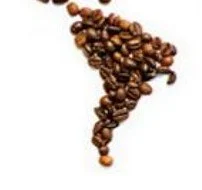
Travel around the world in pursuit of happiness in a cup without leaving your home.
As an agricultural product, coffee is subject to seasonality. Unfortunately, this means keeping any specific single origin in stock year round is nearly impossible without compromising freshness.
It can be difficult to predict if and when a specific coffee will be back in stock because, as a seasonal plant, there are a number of factors that influence the crop cycle.
Our trusted suppliers work very closely with coffee farmers from around the world so they can offer the best premium coffees at the best prices, which allows us to pass that savings on to you.
Coffee Bean Regions
-

Africa
African coffees are often as exotic as the lands they come from. Many coffees in Africa are dry processed, which infuses the beans with flavors from the cherry and mucilage. These coffees often feature a big body that’s enhanced with a strong sweetness. Flavors from Ethiopia’s, Rwanda’s, Kenya’s and Burundi’s coffees are often fruity or floral. Their acidity may fall anywhere between that of a nice merlot or a tannic British breakfast tea.
-

Asia
Asian coffees, such as those from Sumatra, are the heavyweights of coffee. They often have heavy, musty notes that capture the climate they come from. When you first sip a well-curated Asian coffee, you can almost taste the ocean spray misting the volcanic soil it was grown in.
-

Central America
Central America produces coffees that are often bright and clean. The rich soils of Mexico, Guatemala and Nicaragua produce flavors that are slightly less sweet than those from South America. For instance, a coffee from South America might remind you of a milk chocolate bar with its slight sweetness, but a coffee from Central America may be described as having cocoa notes, which are more reminiscent of an 80-percent cocoa bar that’s less sweet. Other flavors found in this region range from nuts to fruits.
-

South America
Coffees from countries like Brazil and Colombia tend to have characteristics that remind people of a classic coffee. The area’s infrastructure is set up for washed and semi-washed processing, which produces a mellow acidity and clean cup. Some common flavors from South America include chocolate, nuts and caramel tones.


























































